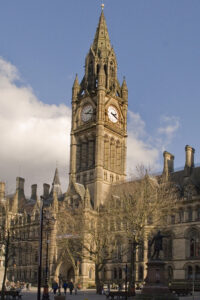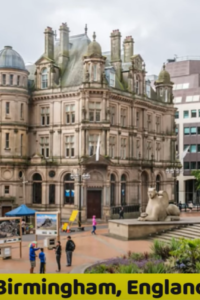Train, subway, or metro – these are the most common names of what you would call a subway system.
However, did you know that London calls it differently? In London, the subway system is referred to as the “Tube”, formally known as the London Underground.
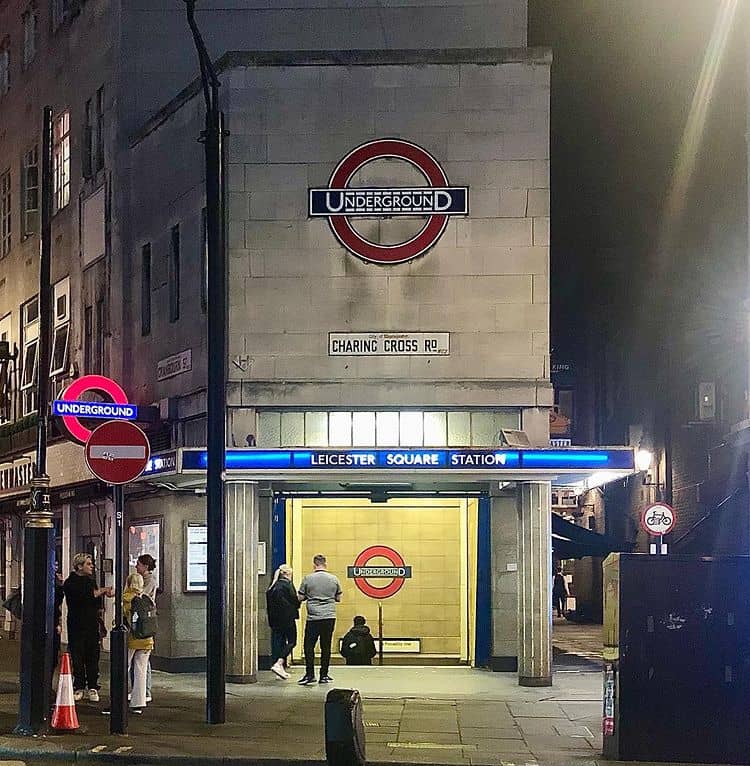
You are probably wondering – what is the difference between a train and a Tube in London?
The Tube is located underground that passes through tunnels in most cities, whereas the train often refers to other train systems like the London Overground and National Rail services.
The London Underground is the main public transportation operating within the entire Greater London.
Today, the Tube has a total of 272 stations covering a track length of 402 km. About five million passenger journeys are made every day on the Tube.
You can therefore expect to use the Tube as your primary mode of transportation while in London.
Some other public transportation options you must know when travelling in London.
- London Bus
- London River Bus
- London Bike Rental
- London Trams
- London DLR
- London Overground
- London Cable Cars
- Driving in London
- Taxis in London
To learn more about Tube, this article covers everything you need to know – from lines, tickets, tips, and many more. The article dives into the following essential topics:
- History of London Underground
- London Underground Lines
- Understanding the London Tube Map
- London Underground How to Pay
- London Underground Fare Prices
- How to Use the Underground in London
- London Under Ground Times
- What Are the Peak Times on the London Underground
- Cycles on the London Underground
- London Underground Night Tube
- London Underground Trip Planning
- Interesting Facts about London Underground
- Wrap Up
Contents
- 1 History of London Underground
- 2 London Underground Lines
- 3 Understanding the London Tube Map
- 4 London Underground How to Pay
- 5 London Underground Fare Prices
- 6 How to Use the Underground in London
- 7 London Under Ground Times
- 8 What Are the Peak Times on the London Underground
- 9 Cycles on the London Underground
- 10 London Underground Night Tube
- 11 London Underground Trip Planning
- 12 Interesting Facts about London Underground
- 12.1 How fast does the London Underground go?
- 12.2 Which line of the London Underground has the most stations?
- 12.3 When was the London Underground built?
- 12.4 Are there bodies buried under the London Underground?
- 12.5 How many miles does the London Underground cover?
- 12.6 What was the first London Underground station?
- 12.7 How deep are London Underground tunnels?
- 12.8 How many stations does the London underground have?
- 13 Wrap Up
History of London Underground
The London Underground opened for public use in 1863 on January 10th. It operated as the Metropolitan Railway, being the first underground train in the world to help minimize traffic.
The first journeys were made from Paddington to Farringdon Street in 1863, followed by journeys from South Kensington to Westminster in 1868.
In 1880, the first tunnel was opened with services running between the Tower of London and Bermondsey.
With more tunnels being made, people eventually started calling the London Underground the “Tube” in 1890. It is also the same year the first deep-level electric tube line in the world was introduced with services between King William Street and Stockwell.
After the Metropolitan line opened in 1863, the next line that opened was Hammersmith & City line in 1864, followed by the District line in 1868, the Circle line in 1871, and the Northern line in 1890.
In 2003, people started using Oyster Cards for fare payments. Today, the London Underground has a total of 11 lines with an annual ridership of about 296 million.
If you are interested in learning more about the Tube’s history, visit the London Transport Museum. The museum is located in the Piazza, near the Covent Garden station and the Royal Opera House.
London Underground Lines
在 Instagram 查看这篇帖子
The London Underground has 11 lines: Bakerloo line, Central line, Circle line, District line, Hammersmith & City line, Jubilee line, Metropolitan line, Northern line, Piccadilly line, Victoria line, and Waterloo & City line.
It is easy to find them on the map with the help of the colored lines assigned by the Transport of London (TfL). To learn more about the stations covered by each line, check out the London Underground stations list.
If you are planning to use the London Underground, check the table below to help you find which line you need to use. The table lists all 11 Tube lines, the designated colors, and the terminus stations.
List of London Underground Lines
| Line | Start ↔ End Stations | Total Stations | Line Map Color |
| Bakerloo line | Harrow & Wealdstone ↔ Elephant & Castle | 25 | Brown |
| Central line | Ealing Broadway ↔ Epping
Ealing Broadway ↔ Hainault West Ruislip ↔ Epping West Ruislip ↔ Hainault via Woodford West Ruislip ↔ Hainault via Newbury Park |
49 | Red |
| Circle line | Hammersmith (H&C Line) ↔ Edgware Road (Circle Line) | 36 | Yellow |
| District line | Ealing Broadway ↔ Upminster
Kensington (Olympia) ↔ Upminster Kensington (Olympia) ↔ Edgware Road (Circle Line) Richmond ↔ Upminster Richmond ↔ Edgware Road (Circle Line) Wimbledon ↔ Upminster Wimbledon ↔ Edgware Road (Circle Line) |
60 | Green |
| Hammersmith & City line | Hammersmith (H&C Line) ↔ Barking | 29 | Pink |
| Jubilee line | Stanmore ↔ Stratford | 27 | Gray |
| Metropolitan line | Amersham ↔ Aldgate
Chesham ↔ Aldgate Uxbridge ↔ Aldgate Watford ↔ Aldgate |
34 | Magenta |
| Northern line | Battersea Power Station ↔ Edgware
Battersea Power Station ↔ High Barnet Morden ↔ Edgware via Bank Morden ↔ Mill Hill East via Bank Morden ↔ High Barnet via Bank Morden ↔ Edgware via Charing Crossing Morden ↔ Mill Hill East via Charing Crossing Morden ↔ High Barnet via Charing Crossing |
52 | Black |
| Piccadilly line | Heathrow Terminal 4 ↔ Cockfosters
Heathrow Terminal 5 ↔ Cockfosters Uxbridge ↔ Cockfosters |
53 | Dark blue |
| Victoria line | Brixton ↔ Walthamstow Central | 16 | Light blue |
| Waterloo & City line | Waterloo ↔ Bank | 2 | Turquoise |
Understanding the London Tube Map
How does the London Underground work? Before going on a journey using the London Underground, the first thing you need to learn is how to use the London Underground Map.

Click here to see the HD London Tube Map.
Some first-time travelers find the map confusing with its interconnected 11 Tube lines, as well as interchanges with other public transportation such as the DLR, Elizabeth line, London Overground, London Trams, Emirates Cable Car, and Thameslink.
When you look at the London Tube Map(PDF), you will find several colored lines forming the public transportation network. Moreover, you will also notice that there are numbered areas on the map, from numbers 1 to 9.
These numbers are called Zones or fare zones that are assigned to each station to determine the exact fare of your journey.
Basically, the more zones you travel to, the higher the fare. Most people find it easy to use the London Underground when traveling through only one line.
However, traveling through multiple transfers to other Tube lines or public transportation can be a bit tricky for some.
To help you commute using the London Underground Map, here is a quick summary of how to use the map with ease.
- Determine your start and end stations and their Tube lines on the map.
- Know which Zones you are traveling to by looking at the shaded gray and white areas with large numbers on the map. If your station falls within the white or gray borders of that Zone, then that is the Zone number of the station. You can also know the Zone number on the second page of the London Tube Map(PDF) which has the list of stations, facilities, and Zones.
- Look for the color of the Tube line on the map.
- Follow the Tube line to know which stations are between your start and end stations.
- When you see a white circle on the line, it indicates that the station has an interchange with another line. This means you can alight at the station and transfer to another line within the same station.
- Check which facility is available at the station by finding the symbols. The symbols indicate whether it has step-free access, transportation interchange, shirt walk between stations, and many more.
TfL provides different types of Tube map guides for a better commute experience. Whether you need a Step-free Tube guide, a Tube map showing tunnels, or a Toilet facilities Tube map, you can download all the map guides in PDF through TfL.
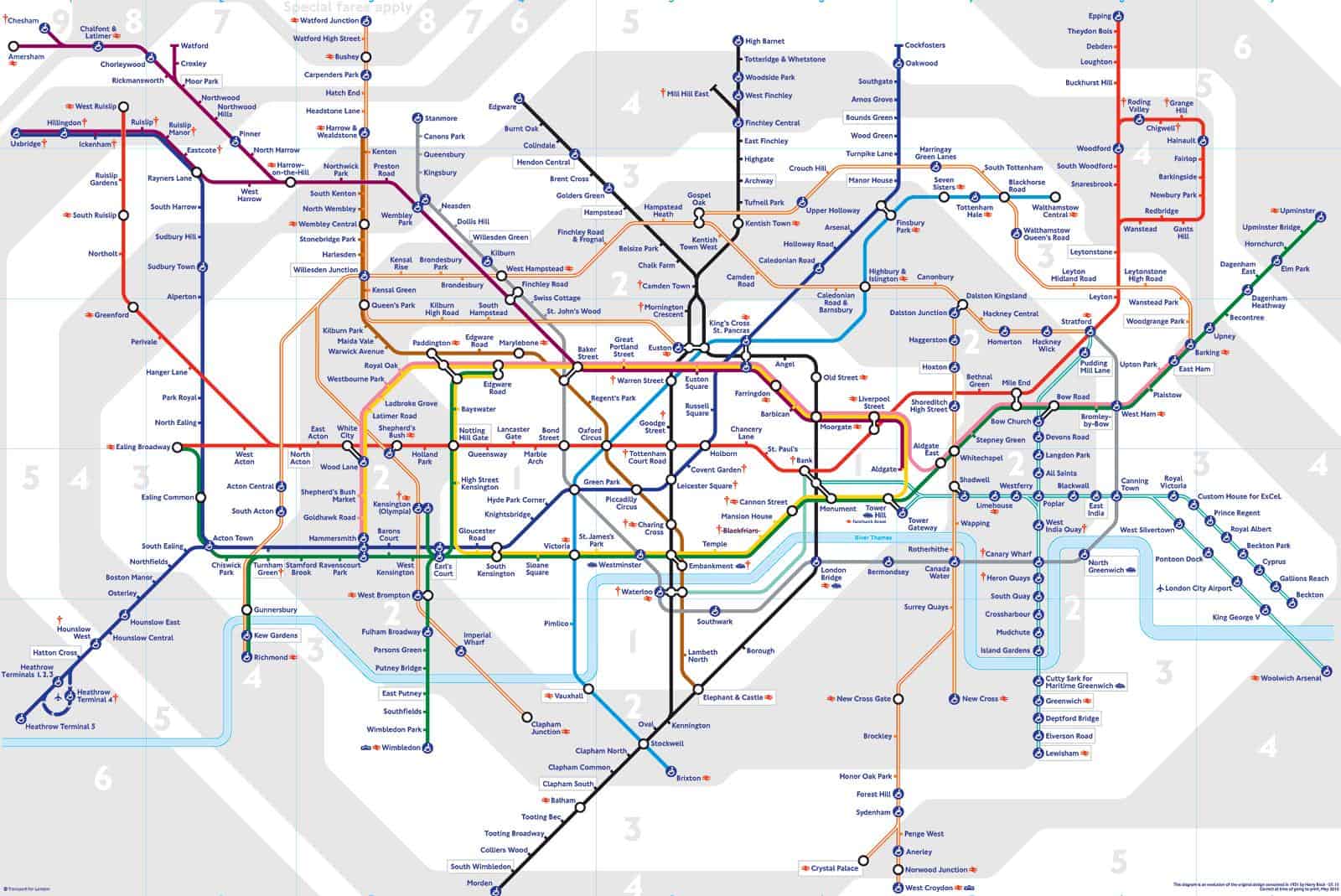
(London Tube Map by Edgepedia via Wikimedia Commons)
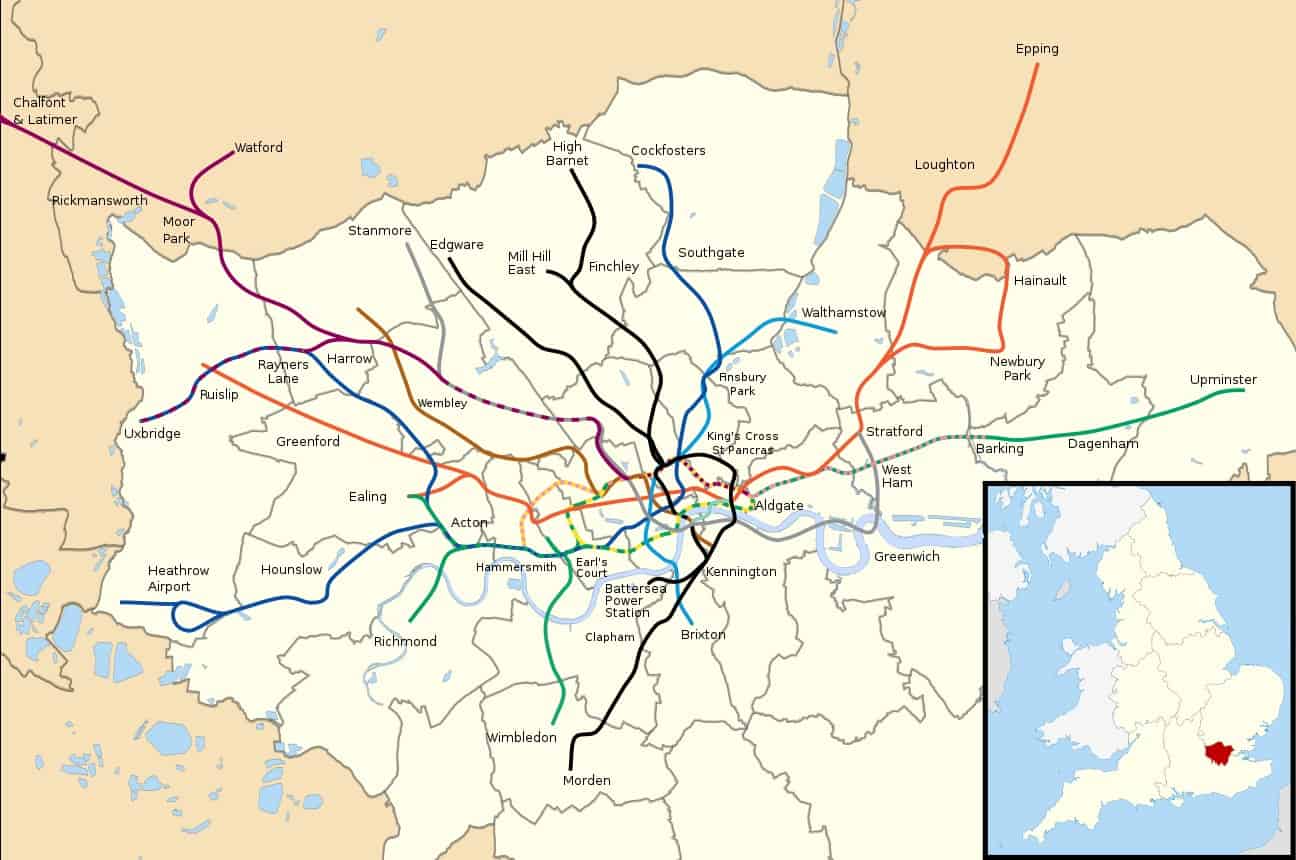
(London Tube Map by Edgepedia via Wikimedia Commons)
London Underground How to Pay
Of course, you can buy the ticket via the ticket machine at the tube stations.
Check the video below to see how to do that.
Gone are the days when you needed to always line up at the ticket offices or machines and pay in cash just to buy a paper ticket.
Today, all you need is a single payment card that you can use to pay for fares across multiple public transportation in London.
Thanks to payment cards, you can say goodbye to counting cash and carrying change when buying a ticket.
There are several ways to pay for your transportation fare. Use either Pay as you go cards, Travelcards, or Contactless devices to pay.
To help you decide which payment type is most suitable to your needs, refer to the guide Visitor Oyster Card Vs Oyster Card Vs Travel Card Vs Contactless Card.
The following is a summary of what each card has to offer.
Pay as you go Rate
Oyster Card
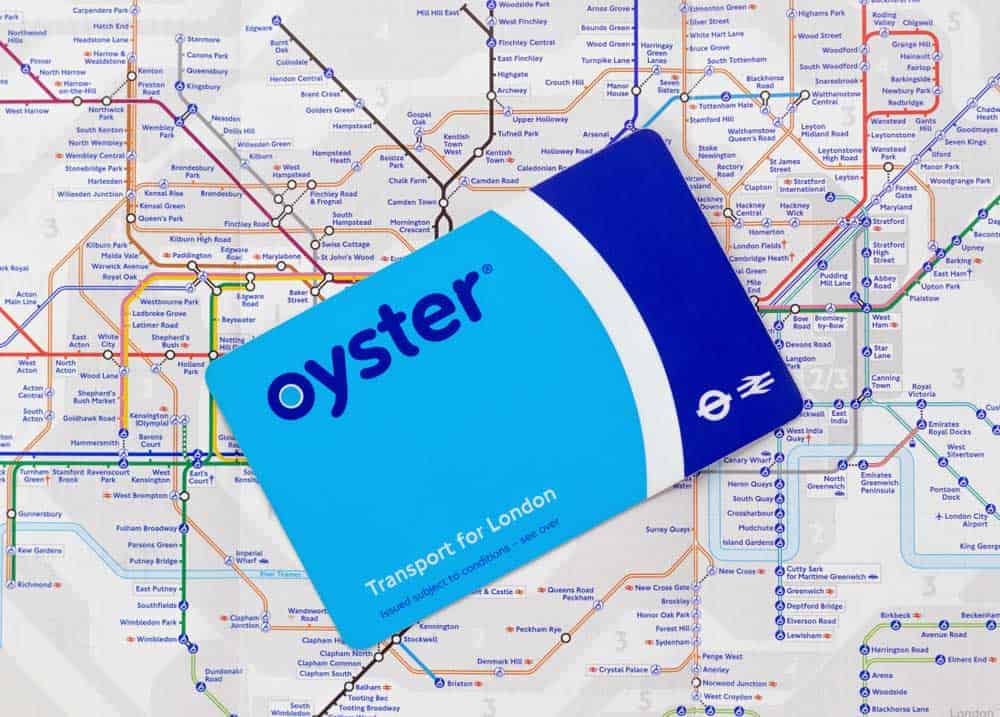
It is the most popular form of payment for riding a bus, tube, tram, London Overground, Elizabeth line, DLR, River Bus, Emirates Cable Car, and most National Rail services.
With the Pay as you go (PAYG) system, you simply just pay for the fare of the journeys you make. Add credit by recharging, and you can set a daily limit by putting in a cap to avoid overspending.
You can manage your credit and check your journey history with the TfL Oyster and contactless app.
To learn more about how to use an Oyster Card, the Complete Guide To Oyster Card covers everything you need to know.
Visitor Oyster Card
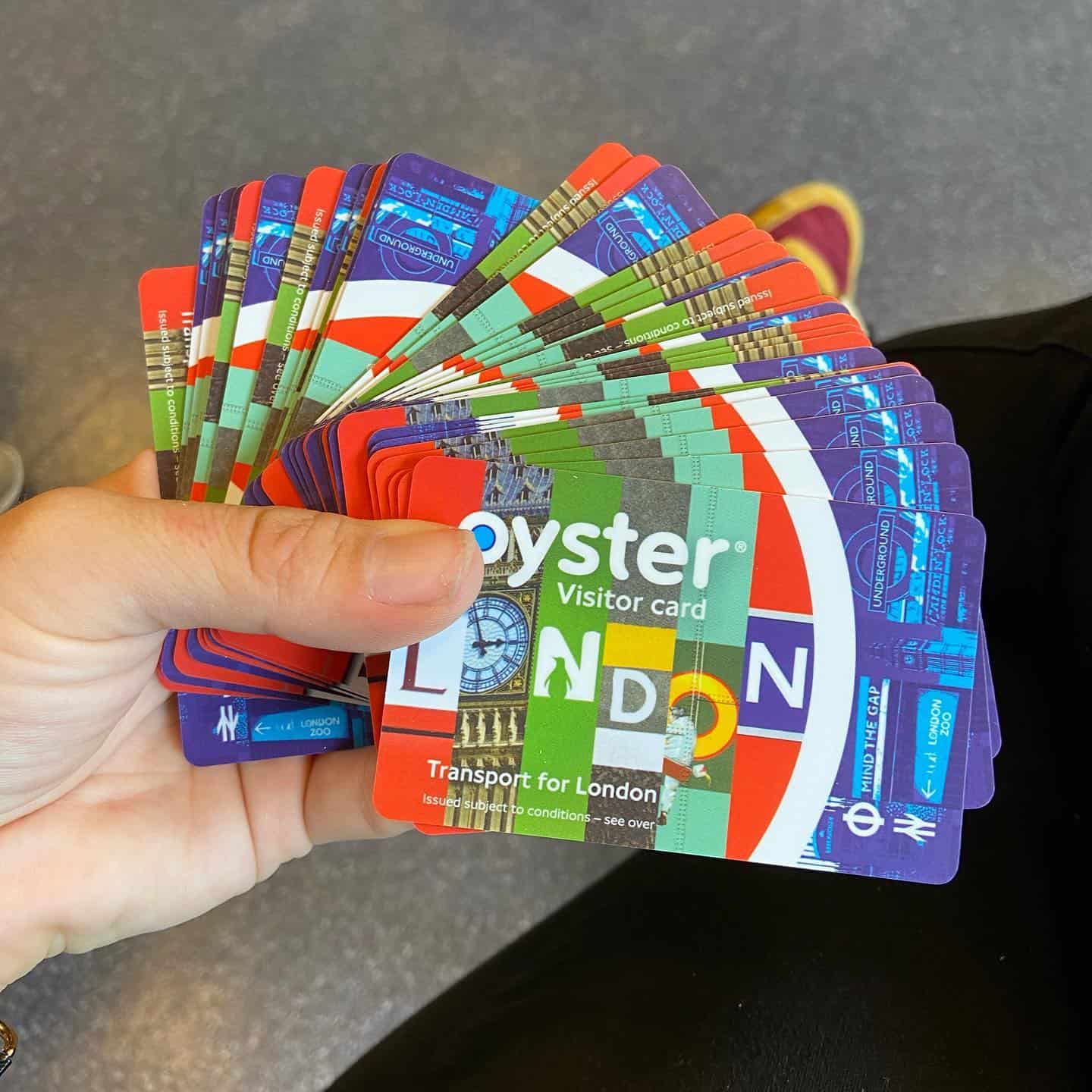
If you would like to prepare ahead of time and have a payment card ready before arriving in London, you can buy a Visitor Oyster Card through the Visitor Shop website, UK locations outside London, and in your country.
Buying this card requires a deposit of £5, plus the amount of credit you want for the card, which can be £10, £15, £20, £25, £30, £35, £40, or £50. The PAYG rate is the same as an Oyster Card.
Use the card when riding buses, trams, Tube, DLR, London Overground, Elizabeth line, Emirates Cable Car, River Bus, and most National Rail services in London.
Similar to an Oyster Card, you need to add credit and top up when your balance is low. Generally, you need £15 credit for a two-day trip or £30 credit for a four-day trip in London.
Contactless Cards and Contactless Devices
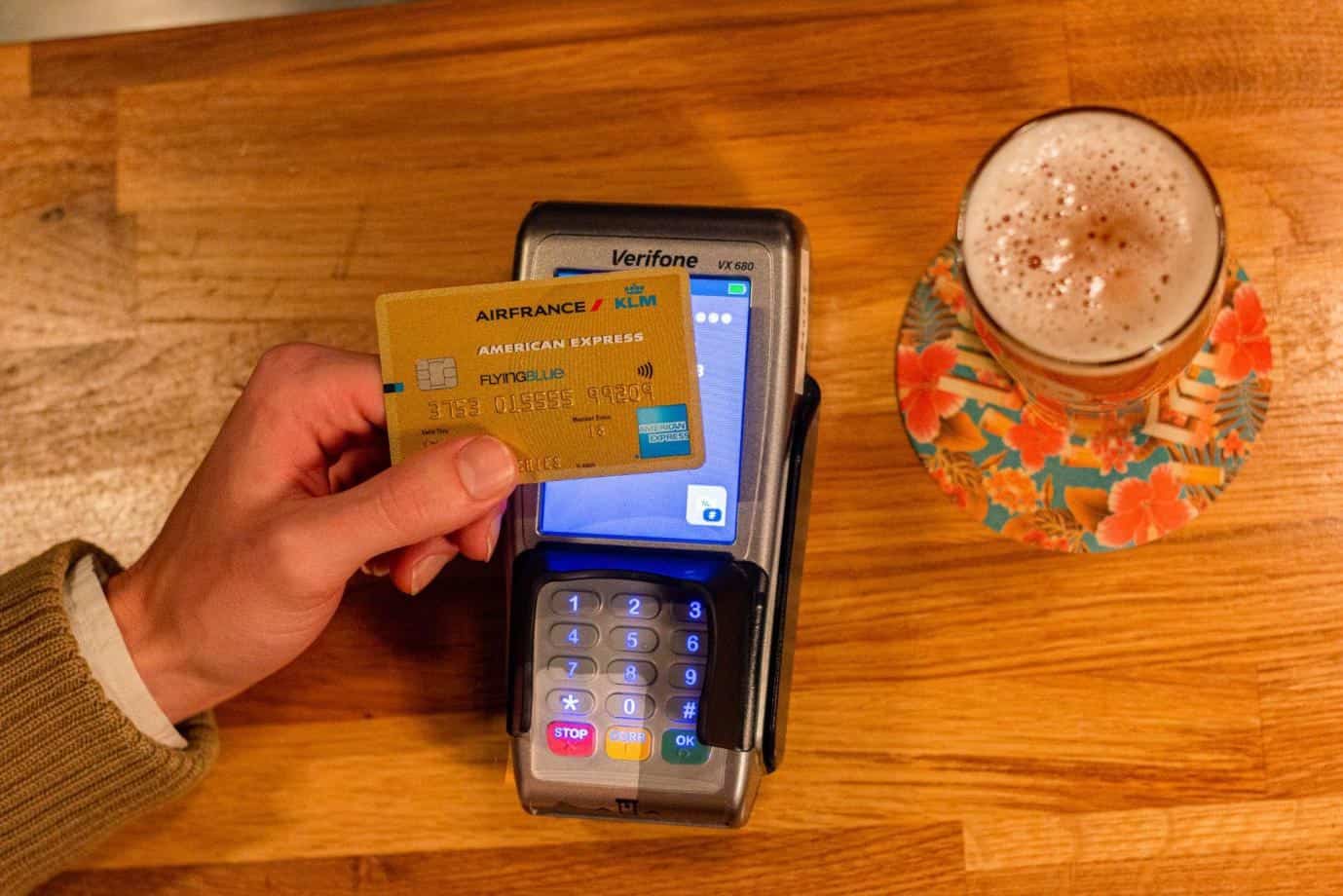
Contactless Cards and devices work by just hovering them over the card reader to pay.
With the Contactless system, it is not necessary to physically touch the card reader or insert your card into the slot. A Contactless Card is simply your own bank card with a Contactless feature.
Contactless bank cards usually have a Contactless symbol printed on the card, which is similar to a “signal” logo with four slightly curved lines.
You can also use mobile payments using a Contactless Device for Apple Pay, Barclaycard Contactless Mobile, bPay, Fitbit Pay, Garmin Pay, Google Pay, or Samsung Pay.
Read the How to Use Contactless Card on London Transport guide to learn more.
Unlimited Journeys
Travelcard
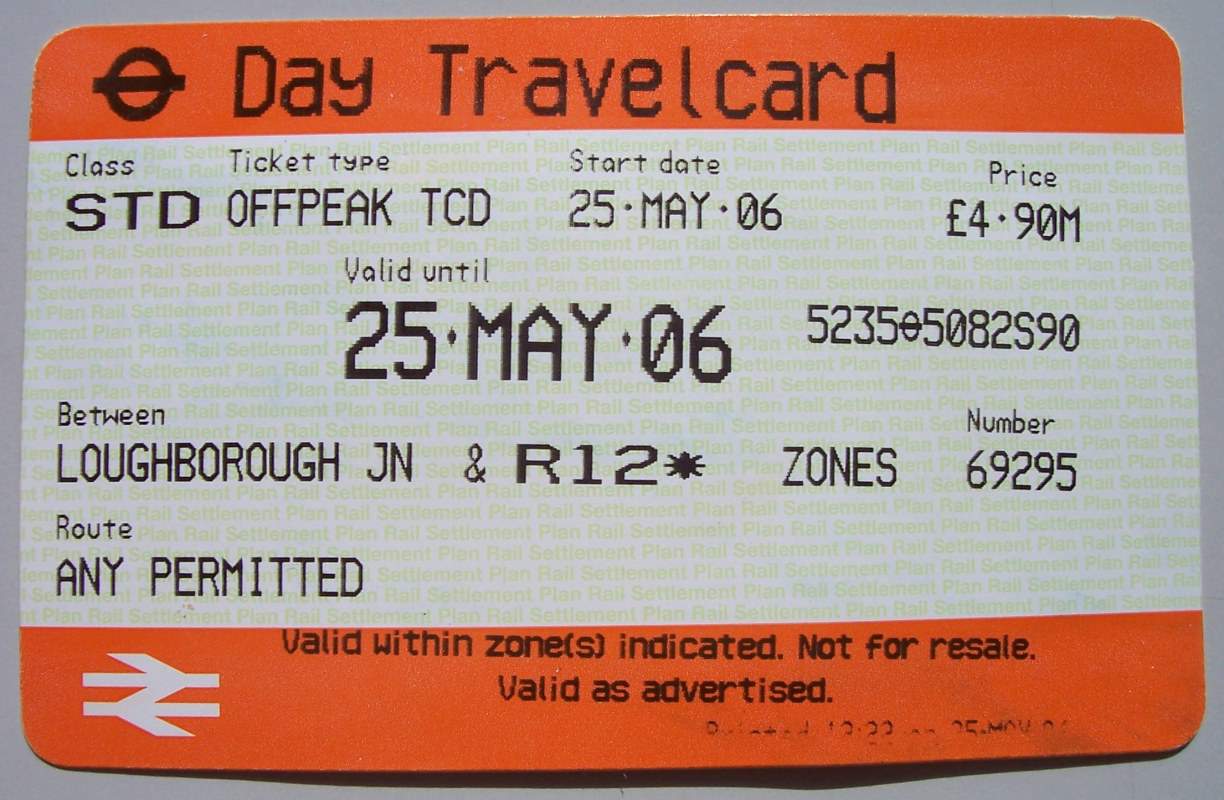
Unlike Pay as you go cards, Travelcards offer unlimited journeys in most public transportation. You do not have to keep topping up since you can travel as much as you want within the date of validity of the card.
Get unlimited travel for one day with a Day Travelcard, one week with a 7 Day Travelcard, one month with a Monthly Travelcard, or one year with an Annual Travelcard.
If you are traveling with a group, you can purchase a Group Day Travelcard valid for one day.
Learn more information on how to Get Unlimited Travel With A London Travel Card.
London Underground Fare Prices
Fares vary depending on the distance and mode of transportation you use. The total cost is determined by the Zones in which you travel. As mentioned, stations are classified according to Fare Zones, which range from Zone 1 to Zone 9.
When buying a payment card, you get to choose which Zones your card is valid to use. Generally, the more Zones are included, the higher the price. So before buying a Pay as you go card or Travelcard, list down the Zones you intend to travel to.
If you do not have a Pay as you go card or Travelcard, you can still travel by buying London Underground Tickets for single or return journeys. However, keep in mind paper tickets are typically more expensive.
Thus, Pay as you go cards or Travelcards are still the most affordable options for commuting in London.
To know the exact fare of your journey, use the Single fare finder tool and input your start and end stations. You can also search for fares using the Zones with the Caps and Travelcard prices tool.
Simply select the start and end zones and passenger type to show the fare prices.
The table below shows the Pay as you go Caps and Travelcard Adult prices for Tube, which is also the standard fare for buses, trams, DLR, most Elizabeth line services, London Overground, and most National Rail services.
Pay as you go Caps and Travelcard Adult Rates
| Zone | Pay as you go caps | Travelcard | ||||||
| Daily Peak | Daily Off-peak | Monday to Sunday | Day Anytime | Day Off-peak | 7 Day | Monthly | Annual | |
| Zones 1 only | £7.70 | £7.70 | £38.40 | £14.40 | £14.40 | £38.40 | £147.50 | £1,536 |
| Zones 1-2 | £7.70 | £7.70 | £38.40 | £14.40 | £14.40 | £38.40 | £147.50 | £1,536 |
| Zones 1-3 | £9.00 | £9.00 | £45.20 | £14.40 | £14.40 | £45.20 | £173.60 | £1,808 |
| Zones 1-4 | £11.00 | £11.00 | £55.20 | £14.40 | £14.40 | £55.20 | £212.00 | £2,208 |
| Zones 1-5 | £13.10 | £13.10 | £65.70 | £20.30 | £14.40 | £65.70 | £252.30 | £2,628 |
| Zones 1-6 | £14.10 | £14.10 | £70.30 | £20.30 | £14.40 | £70.30 | £270.00 | £2,812 |
| Zones 1-7 | £15.30 | £14.10 | £76.50 | £25.70 | £15.30 | £76.50 | £293.80 | £3,060 |
| Zones 1-8 | £18.10 | £14.10 | £90.30 | £25.70 | £15.30 | £90.30 | £346.80 | £3,612 |
| Zones 1-9 | £20.00 | £14.10 | £100.20 | £25.70 | £15.30 | £100.20 | £384.80 | £4,008 |
| Zone 2 only | £7.70 | £7.70 | £28.80 | £14.40 | £14.40 | £28.80 | £110.60 | £1,152 |
| Zones 2-3 | £9.00 | £9.00 | £28.80 | £14.40 | £14.40 | £28.80 | £110.60 | £1,152 |
| Zones 2-4 | £11.00 | £11.00 | £31.90 | £14.40 | £14.40 | £31.90 | £122.50 | £1,276 |
| Zones 2-5 | £13.10 | £13.10 | £38.20 | £20.30 | £14.40 | £38.20 | £146.70 | £1,528 |
| Zones 2-6 | £14.10 | £14.10 | £48.10 | £20.30 | £14.40 | £48.10 | £184.80 | £1,924 |
| Zones 2-7 | £15.30 | £14.10 | £49.90 | £25.70 | £15.30 | £49.90 | £191.70 | £1,996 |
| Zones 2-8 | £18.10 | £14.10 | £67.90 | £25.70 | £15.30 | £67.90 | £260.80 | £2,716 |
| Zones 2-9 | £20.00 | £14.10 | £67.90 | £25.70 | £15.30 | £67.90 | £260.80 | £2,716 |
| Zone 3 only | £9.00 | £9.00 | £28.80 | £14.40 | £14.40 | £28.80 | £110.60 | £1,152 |
| Zones 3-4 | £11.00 | £11.00 | £28.80 | £14.40 | £14.40 | £28.80 | £110.60 | £1,152 |
| Zones 3-5 | £13.10 | £13.10 | £31.90 | £20.30 | £14.40 | £31.90 | £122.50 | £1,276 |
| Zones 3-6 | £14.10 | £14.10 | £38.20 | £20.30 | £14.40 | £38.20 | £146.70 | £1,528 |
| Zones 3-7 | £15.30 | £14.10 | £49.90 | £25.70 | £15.30 | £49.90 | £191.70 | £1,996 |
| Zones 3-8 | £18.10 | £14.10 | £67.90 | £25.70 | £15.30 | £67.90 | £260.80 | £2,716 |
| Zones 3-9 | £20.00 | £14.10 | £67.90 | £25.70 | £15.30 | £67.90 | £260.80 | £2,716 |
| Zone 4 only | £11.00 | £11.00 | £28.80 | £14.40 | £14.40 | £28.80 | £110.60 | £1,152 |
| Zones 4-5 | £13.10 | £13.10 | £28.80 | £20.30 | £14.40 | £28.80 | £110.60 | £1,152 |
| Zones 4-6 | £14.10 | £14.10 | £31.90 | £20.30 | £14.40 | £31.90 | £122.50 | £1,276 |
| Zones 4-7 | £15.30 | £14.10 | £36.10 | £25.70 | £15.30 | £36.10 | £138.70 | £1,444 |
| Zones 4-8 | £18.10 | £14.10 | £60.80 | £25.70 | £15.30 | £60.80 | £233.50 | £2,432 |
| Zones 4-9 | £20.00 | £14.10 | £60.80 | £25.70 | £15.30 | £60.80 | £233.50 | £2,432 |
| Zone 5 only | £13.10 | £13.10 | £28.80 | £20.30 | £14.40 | £28.80 | £110.60 | £1,152 |
| Zones 5-6 | £14.10 | £14.10 | £28.80 | £20.30 | £14.40 | £28.80 | £110.60 | £1,152 |
| Zones 5-7 | £15.30 | £14.10 | £36.10 | £25.70 | £15.30 | £36.10 | £138.70 | £1,444 |
| Zones 5-8 | £18.10 | £14.10 | £60.80 | £25.70 | £15.30 | £60.80 | £233.50 | £2,432 |
| Zones 5-9 | £20.00 | £14.10 | £60.80 | £25.70 | £15.30 | £60.80 | £233.50 | £2,432 |
| Zone 6 only | £14.10 | £14.10 | £28.80 | £20.30 | £14.40 | £28.80 | £110.60 | £1,152 |
| Zones 6-7 | £15.30 | £14.10 | £36.10 | £25.70 | £15.30 | £36.10 | £138.70 | £1,444 |
| Zones 6-8 | £18.10 | £14.10 | £60.80 | £25.70 | £15.30 | £60.80 | £233.50 | £2,432 |
| Zones 6-9 | £20.00 | £14.10 | £60.80 | £25.70 | £15.30 | £60.80 | £233.50 | £2,432 |
| Zone 7 only | £15.30 | £14.10 | £36.10 | £25.70 | £15.30 | £36.10 | £138.70 | £1,444 |
| Zones 7-8 | £18.10 | £14.10 | £60.80 | £25.70 | £15.30 | £60.80 | £233.50 | £2,432 |
| Zones 7-9 | £20.00 | £14.10 | £60.80 | £25.70 | £15.30 | £60.80 | £233.50 | £2,432 |
| Zone 8 only | £18.10 | £14.10 | £60.80 | £25.70 | £15.30 | £60.80 | £233.50 | £2,432 |
| Zones 8-9 | £20.00 | £14.10 | £60.80 | £25.70 | £15.30 | £60.80 | £233.50 | £2,432 |
Rates for children are either discounted or free. Children between 5 to 10 years old are free to travel on Tube as long as they have a 5-10 Zip Oyster photocard. The photocard should also follow the touch in and touch out process at the start and end stations.
For children between 11 to 15 years old, 16+ years old, and students above 18 years old, they get a discounted fare if they have the appropriate Zip Oyster photocard.
To know more about the fare for children with Oyster photocards, check the Tube and rail fares. The table below shows a summary of Oyster Photocard Caps and Travelcard Child Rates for all Zones.
Oyster Photocard Caps and Travelcard Child Rates
| 11-15 Zip Oyster photocard caps and Travelcard prices | |||||||
| Zone | Pay as you go caps | Travelcards | |||||
| Daily Peak | Daily Off-peak | Day Anytime | Day Off-peak | 7 Day | Monthly | Annual | |
| Zone 1 | £3.85 | £1.60 | £7.20 | £7.20 | £19.20 | £73.80 | £768 |
| Zones 1-9 | £10.00 | £1.60 | £12.80 | £7.60 | £50.10 | £192.40 | £2,004 |
| Zone 2 | £3.85 | £1.60 | £7.20 | £7.20 | £14.40 | £55.30 | £576 |
| Zones 2-9 | £10.00 | £1.60 | £12.80 | £7.60 | £34.00 | £130.60 | £1,360 |
| Zone 3 | £4.50 | £1.60 | £7.20 | £7.20 | £14.40 | £55.30 | £576 |
| Zone 4 | £5.50 | £1.60 | £7.20 | £7.20 | £14.40 | £55.30 | £576 |
| Zone 5 | £6.55 | £1.60 | £10.10 | £7.20 | £14.40 | £55.30 | £576 |
| Zone 6 | £7.05 | £1.60 | £10.10 | £7.20 | £14.40 | £55.30 | £576 |
| Zone 7 | £7.65 | £1.60 | £12.80 | £7.60 | £18.10 | £69.60 | £724 |
| Zone 8 | £9.05 | £1.60 | £12.80 | £7.60 | £30.40 | £116.80 | £1,216 |
| Zones 8-9 | £10.00 | £1.60 | £12.80 | £7.60 | £30.40 | £116.80 | £1,216 |
| 16+ Zip Oyster photocard caps and Travelcard prices | |||||||
| Zone | Pay as you go caps | Travelcards | |||||
| Daily Peak | Daily Off-peak | Day Anytime | Day Off-peak | 7 Day | Monthly | Annual | |
| Zone 1 | £3.85 | £3.85 | £14.40 | £14.40 | £19.20 | £73.80 | £768 |
| Zones 1-9 | £10.00 | £7.05 | £25.70 | £15.30 | £50.10 | £192.40 | £2,004 |
| Zone 2 | £3.85 | £3.85 | £14.40 | £14.40 | £14.40 | £55.30 | £576 |
| Zone 3 | £4.50 | £4.50 | £14.40 | £14.40 | £14.40 | £55.30 | £576 |
| Zone 4 | £5.50 | £5.50 | £14.40 | £14.40 | £14.40 | £55.30 | £576 |
| Zone 5 | £6.55 | £6.55 | £20.30 | £14.40 | £14.40 | £55.30 | £576 |
| Zone 6 | £7.05 | £7.05 | £20.30 | £14.40 | £14.40 | £55.30 | £576 |
| Zone 7 | £7.65 | £7.05 | £25.70 | £15.30 | £18.10 | £69.60 | £724 |
| Zone 8 | £9.05 | £7.05 | £25.70 | £15.30 | £30.40 | £116.80 | £1,216 |
| Zones 8-9 | £10.00 | £7.05 | £25.70 | £15.30 | £30.40 | £116.80 | £1,216 |
| 18+ Student Oyster photocard caps and Travelcard prices | |||||||
| Zone | Pay as you go caps | Travelcards | |||||
| Daily Peak | Daily Off-peak | Day Anytime | Day Off-peak | 7 Day | Monthly | Annual | |
| Zone 1 | £7.70 | £7.70 | £14.40 | £14.40 | £26.80 | £103.00 | £1,072 |
| Zones 1-9 | £20.00 | £14.10 | £25.70 | £15.30 | £70.10 | £269.20 | £2,804 |
| Zone 2 | £7.70 | £7.70 | £14.40 | £14.40 | £20.10 | £77.20 | £804 |
| Zone 3 | £9.00 | £9.00 | £14.40 | £14.40 | £20.10 | £77.20 | £804 |
| Zone 4 | £11.00 | £11.00 | £14.40 | £14.40 | £20.10 | £77.20 | £804 |
| Zone 5 | £13.10 | £13.10 | £20.30 | £14.40 | £20.10 | £77.20 | £804 |
| Zone 6 | £14.10 | £14.10 | £20.30 | £14.40 | £20.10 | £77.20 | £804 |
| Zone 7 | £15.30 | £14.10 | £25.70 | £15.30 | £25.20 | £96.80 | £1,008 |
| Zone 8 | £18.10 | £14.10 | £25.70 | £15.30 | £42.50 | £163.20 | £1,700 |
| Zones 8-9 | £20.00 | £14.10 | £25.70 | £15.30 | £42.50 | – | – |
Disabled persons also get discounted rates on the Tube. If you would like to learn more about discounts for other passenger types, check out the complete list of Tube and rail fares.
The table below shows the Pay as you go cap and Travelcard fares for disabled persons from Zones 1 to 9.
Disabled Persons Railcard Caps and Travelcard Rates
| Zone | Pay as you go caps | Travelcards | ||
| Daily Peak | Daily Off-peak | Day Anytime | Day Off-peak | |
| Zones 1 only | £5.10 | £5.10 | £14.40 | £9.50 |
| Zones 1-9 | £13.20 | £9.30 | £25.70 | £10.10 |
| Zone 2 only | £5.10 | £5.10 | £14.40 | £9.50 |
| Zone 3 only | £5.95 | £5.95 | £14.40 | £9.50 |
| Zone 4 only | £7.25 | £7.25 | £14.40 | £9.50 |
| Zone 5 only | £8.65 | £8.65 | £20.30 | £9.50 |
| Zone 6 only | £9.30 | £9.30 | £20.30 | £9.50 |
| Zone 7 only | £10.10 | £9.30 | £25.70 | £10.10 |
| Zone 8 only | £11.95 | £9.30 | £25.70 | £10.10 |
| Zones 8-9 | £13.20 | £9.30 | £25.70 | £10.10 |
How to Use the Underground in London
After learning how to navigate the London Underground map and the payment cards to use, the next crucial aspect is learning how to enter and exit the stations.
The first thing you need to know is the process of touch in and touch out to complete a journey. Before entering the station, you have to touch in your card on a yellow card reader to indicate your starting station.
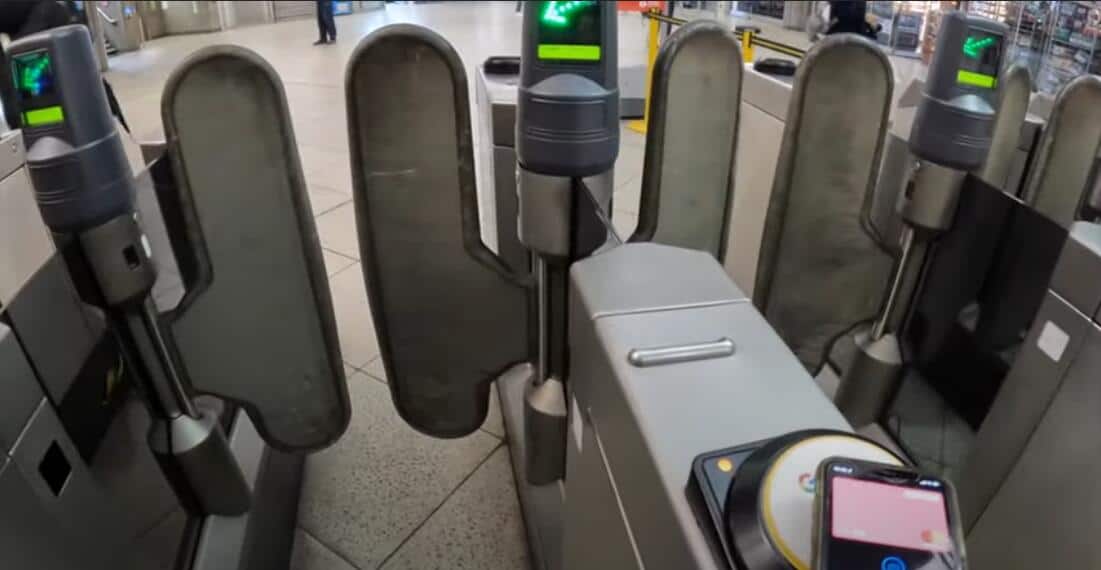
When you need to exit the station, touch out on the yellow card reader again to indicate the end of your journey. In this way, the system calculates the correct fare for your journey.
Upon entering the station, follow the symbols or Tube line-colored signs leading to your designated line.
Afterward, choose the correct platform going to your station which can be determined through the digital screens showing the endpoint station of the next incoming train.
The digital screens display the arrival times of the next trains, so keep watch on your train’s arrival time to avoid boarding the wrong train. Remember, if you do not touch in and touch out correctly, you may be charged a penalty fee or the maximum fare.
The penalty fare is £80, which can be reduced to £40 if paid within three weeks or 21 days.
Since the exact fare cannot be determined because of an incomplete journey, you may also be charged the maximum fare, depending on the area. Below is the list of the maximum fare per area of the London Underground.
Maximum Fare Table
| Area | Peak Hours | Off-peak Hours |
| Zone 1 to Zone 9 stations (except Heathrow Express) | Maximum £8.90 | Maximum £6 |
| Gatwick Airport | £19.00 | £11.50 |
| Paddington to Heathrow via Heathrow Express | £25.00 | £25.00 |
| London Victoria (Gatwick Express platforms) | £20.60 | £20.60 |
London Under Ground Times
Be on schedule with the help of live status updates of London transportation. You can also stay informed on planned line closures and service changes for a smooth journey.
Although there is a standard time for First & Last Tube services, you may want to get the latest updates on travel times using the Tube and rail timetable.
To use the Tube and rail timetable, select a Tube line and choose your start and end stations. The timetable shows the departure and arrival times of the Tube from weekdays and weekends.
You can also select the first service, last service, or any specific time you wish to check.
What Are the Peak Times on the London Underground
Aside from fare zones and the type of ticket, the fare is also based on the peak and off-peak times. The rates during off-peak times are typically cheaper than the rates during peak times.
The London Underground has different peak and off-peak hours for Pay as you go cards and Day Travelcards.
To help you travel better, the table below shows the peak and off-peak times and specific conditions to know.
Peak Time and Off-Peak Time Table
| Pay as you go | Day Travelcard | |
| Peak Time | Monday to Friday (except on public holidays)
06:30 am to 09:30 am 16:00 pm to 19:00 pm Journeys arriving to or coming from Heathrow Airport that start, end, or pass through Zone 1 |
Anytime Day Travelcard
Starting from the date of use of the ticket until 04:29 am the next morning |
|
Off-peak TIme |
All other times
Monday to Friday 09:31 am to 15:59 pm 19:01 pm to 06:29 am the next day Journeys coming from Zones 2 to 9 and then entering Zone 1, from Monday to Friday between 16:00 and 19:00 |
Off-peak Day Travelcard Monday to Friday 09:30 am onwards (for the whole day) Saturday, Sunday, Public Holidays Starting from the date of use of the ticket until 04:29 am the next morning Night Service Journeys Starting from the date of use of the ticket until 04:29 am the next morning |
Cycles on the London Underground
Cyclists need not worry as cycles on public transport are allowed. Folded cycles are allowed to take with you on board at any time on most public transportation.
If you have a non-folding cycle, you may have to check on the Taking cycles on the rail services map to know which lines you can take.
Generally, non-folding cycles are not allowed on trains between 07:30 and 09:30 in the morning and 16:00 and 19:00 in the evening from Monday to Friday.
However, non-folding cycles are allowed anytime on the weekends and public holidays. If you have either a folding or non-folding electric scooter, it is usually not allowed on board.
Check the List of London Underground Lines for Cycles below for more information.
List of London Underground Lines for Cycles
| Line | Stations |
| Bakerloo | Queen’s Park ↔ Harrow & Wealdstone |
| Central | Leyton ↔ Epping ↔ Newbury Park (via Hainault only)
White City ↔ Ealing Broadway ↔ West Ruislip |
| Circle | All Stations |
| District | All Stations |
| Hammersmith & City | Stratford ↔ Canning Town
Finchley Road ↔ Stanmore |
| Metropolitan | All Stations |
| Northern | Golders Green ↔ Hendon Central
Colindale ↔ Edgware East Finchley ↔ Mill Hill East ↔ High Barnet |
| Piccadilly | Oakwood ↔ Cockfosters
Barons Court ↔ Hounslow West ↔ Uxbridge |
London Underground Night Tube
The Night Tube is an excellent option for late-night or early-morning travel. It runs services on the Central line, Jubilee line, Northern line, Piccadilly line, and Victoria line on Friday and Saturday evenings.
Check the Night Tube and London Overground map to know which routes to take.
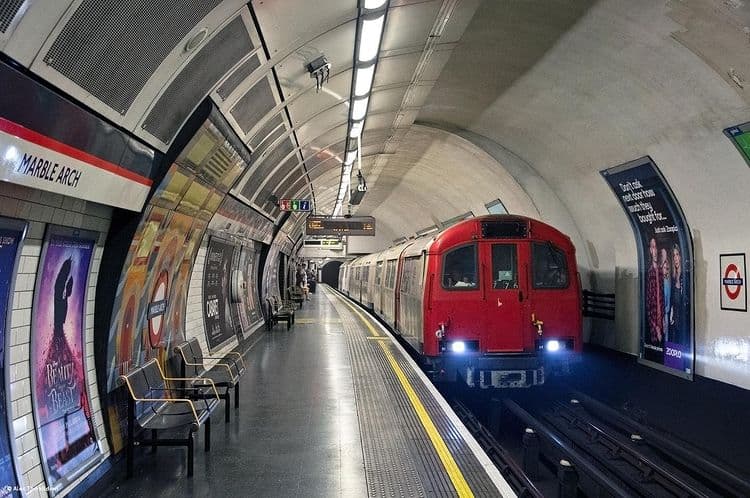
The fares on the Night Tube follow the off-peak rates. If you are using a Day Travelcard, you can travel up to 04:29 am the next morning.
Journeys on the Night Tube are shortened by about 20 minutes, and even up to more than one hour.
Getting a taxi is not a problem since there are taxis at each station. Refer to the Night Tube taxi rank guide for more details.
London Underground Trip Planning
Plan ahead with the help of TfL’s Travel tools. The tools show live arrival and departure times, planned closure, status updates, major works and events, and travel advice.
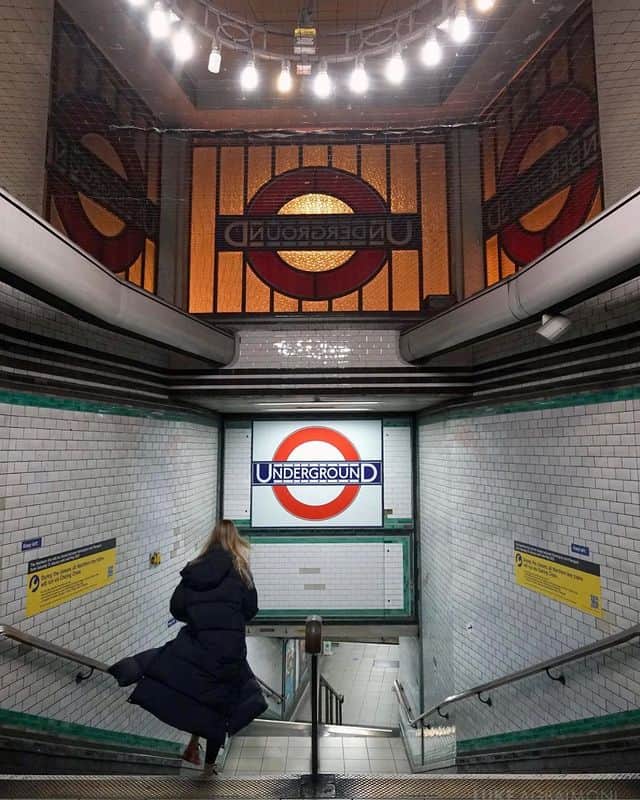
Moreover, you can plan a trip by inputting your start and end stations and your planned departure time.
After clicking “Plan my journey”, the page shows the journey results, which include transportation options, editable preferences, and routes you can take.
Aside from using these helpful tools, it is always a good idea to read London travel blogs to learn more tips and recommendations such as 12 Best Halal Restaurants in London or Best Cafes In Shoreditch.
Interesting Facts about London Underground
You may have read that the London Underground is the oldest in the world or that more than 1,000 bodies lie underneath Aldgate station.
Some of these facts may be true or not. So which of these facts is true about the London Underground?
To answer this question, I listed some frequently asked questions about the London Underground and the answers you need to know.
How fast does the London Underground go?
The average speed of the London Underground is about 21 mph or 33 kph.
Which line of the London Underground has the most stations?
The District line has the most number of stations, with a total of 60 stations.
When was the London Underground built?
It was built on January 10, 1863, making it the world’s first and oldest underground railway.
Are there bodies buried under the London Underground?
According to MyLondon news, there were more than 1,000 bodies found underneath the Aldgate Station of the Circle line and Metropolitan line. The bodies are thought to be caused by the Great Plague.
How many miles does the London Underground cover?
The London Underground stretches a length of 250 mi or 402 km.
What was the first London Underground station?
The first London Underground station was from the Metropolitan Railway between Paddington and Farringdon Street, which is now included in the Circle line.
How deep are London Underground tunnels?
Hampstead, on the Northern line, has the deepest tunnel, with a depth of 58.5 meters.
How many stations does the London underground have?
The London Underground has a total of 272 stations.
Wrap Up
As long as you know how to use the map, have the right payment card, and follow the tips and advice in this article, you will be able to use the London Underground like a local.
Don’t forget to travel safely and follow safety precautions to protect yourself. If you want to have an inspiring journey with the London Underground, I recommend reading Poems on the Underground or appreciating Art on the Underground.
Have you used the Tube before? Do you have any recommendations for fellow travelers? Share them below in the comments section.

